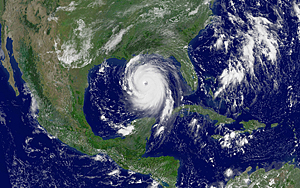


- Rozovsky wins prestigious NSF Early Career Award
- UD students meet alumni, experience 'closing bell' at NYSE
- Newark Police seek assistance in identifying suspects in robbery
- Rivlin says bipartisan budget action, stronger budget rules key to reversing debt
- Stink bugs shouldn't pose problem until late summer
- Gao to honor Placido Domingo in Washington performance
- Adopt-A-Highway project keeps Lewes road clean
- WVUD's Radiothon fundraiser runs April 1-10
- W.D. Snodgrass Symposium to honor Pulitzer winner
- New guide helps cancer patients manage symptoms
- UD in the News, March 25, 2011
- For the Record, March 25, 2011
- Public opinion expert discusses world views of U.S. in Global Agenda series
- Congressional delegation, dean laud Center for Community Research and Service program
- Center for Political Communication sets symposium on politics, entertainment
- Students work to raise funds, awareness of domestic violence
- Equestrian team wins regional championship in Western riding
- Markell, Harker stress importance of agriculture to Delaware's economy
- Carol A. Ammon MBA Case Competition winners announced
- Prof presents blood-clotting studies at Gordon Research Conference
- Sexual Assault Awareness Month events, programs announced
- Stay connected with Sea Grant, CEOE e-newsletter
- A message to UD regarding the tragedy in Japan
- More News >>
- March 31-May 14: REP stages Neil Simon's 'The Good Doctor'
- April 2: Newark plans annual 'wine and dine'
- April 5: Expert perspective on U.S. health care
- April 5: Comedian Ace Guillen to visit Scrounge
- April 6, May 4: School of Nursing sponsors research lecture series
- April 6-May 4: Confucius Institute presents Chinese Film Series on Wednesdays
- April 6: IPCC's Pachauri to discuss sustainable development in DENIN Dialogue Series
- April 7: 'WVUDstock' radiothon concert announced
- April 8: English Language Institute presents 'Arts in Translation'
- April 9: Green and Healthy Living Expo planned at The Bob
- April 9: Center for Political Communication to host Onion editor
- April 10: Alumni Easter Egg-stravaganza planned
- April 11: CDS session to focus on visual assistive technologies
- April 12: T.J. Stiles to speak at UDLA annual dinner
- April 15, 16: Annual UD push lawnmower tune-up scheduled
- April 15, 16: Master Players series presents iMusic 4, China Magpie
- April 15, 16: Delaware Symphony, UD chorus to perform Mahler work
- April 18: Former NFL Coach Bill Cowher featured in UD Speaks
- April 21-24: Sesame Street Live brings Elmo and friends to The Bob
- April 30: Save the date for Ag Day 2011 at UD
- April 30: Symposium to consider 'Frontiers at the Chemistry-Biology Interface'
- April 30-May 1: Relay for Life set at Delaware Field House
- May 4: Delaware Membrane Protein Symposium announced
- May 5: Northwestern University's Leon Keer to deliver Kerr lecture
- May 7: Women's volleyball team to host second annual Spring Fling
- Through May 3: SPPA announces speakers for 10th annual lecture series
- Through May 4: Global Agenda sees U.S. through others' eyes; World Bank president to speak
- Through May 4: 'Research on Race, Ethnicity, Culture' topic of series
- Through May 9: Black American Studies announces lecture series
- Through May 11: 'Challenges in Jewish Culture' lecture series announced
- Through May 11: Area Studies research featured in speaker series
- Through June 5: 'Andy Warhol: Behind the Camera' on view in Old College Gallery
- Through July 15: 'Bodyscapes' on view at Mechanical Hall Gallery
- More What's Happening >>
- UD calendar >>
- Middle States evaluation team on campus April 5
- Phipps named HR Liaison of the Quarter
- Senior wins iPad for participating in assessment study
- April 19: Procurement Services schedules information sessions
- UD Bookstore announces spring break hours
- HealthyU Wellness Program encourages employees to 'Step into Spring'
- April 8-29: Faculty roundtable series considers student engagement
- GRE is changing; learn more at April 15 info session
- April 30: UD Evening with Blue Rocks set for employees
- Morris Library to be open 24/7 during final exams
- More Campus FYI >>
2:09 p.m., Sept. 17, 2008----When Hurricane Katrina struck New Orleans on Aug. 29, 2005, many residents ignored the mayor's mandatory evacuation order. Some had no access to cars, while others believed that they would be safe in their homes or that they needed to stay behind to protect their property. Even the date was a factor in some people's reluctance to leave: it was the end of the month, and many were waiting for much-needed paychecks. In the case of Hurricane Rita, which hit Louisiana and Texas less than a month later, the evacuation process actually proved to be more deadly than the hurricane; only seven people died as a direct result of the storm, but many more perished in deadly hot cars stalled on gridlocked highways.
“Hurricane evacuation and sheltering are not new topics, but these recent events have shown that there are still challenges in developing effective plans,” says Rachel Davidson, associate professor of civil engineering. Through a grant from the National Science Foundation (NSF), Davidson and sociologist Tricia Wachtendorf, associate director of UD's Disaster Research Center, will soon begin work on a model that they hope will contribute to better planning efforts in the future.
Awarded through NSF's Human and Social Dynamics (HSD) Program, the three-year, $750,000 project brings together a multidisciplinary team to improve understanding of and decision support for evacuation and mass case sheltering in hurricanes. Coordinated by UD's Disaster Research Center, the project team also includes Linda Nozick from Cornell University, as well as several consultants with expertise in evacuation behavior, evacuation modeling and storm-surge modeling.
Davidson points out that evacuation is a battle between the time required to get everyone to safety and the lead time provided by hurricane forecasting. “This is an area where there's a lot of uncertainty,” Davidson says. “If a decision to evacuate is delayed for too long, lives can be lost. On the other hand, making that decision too soon, when the hurricane track and intensity are still unknown, can result in the expense and danger of unnecessary evacuations.”
In addition, recent demographic, cultural and technological shifts suggest that evacuation behavior may be changing, with implications for the way it is managed. For example, there are now more single-person, single-parent, and elderly households. Cell phones, the Internet, in-vehicle GPS and other technologies have changed the way people receive and disseminate information.
“Overcoming these daunting challenges requires a fundamentally new, holistic approach to decision support for hurricane evacuation and sheltering,” Davidson says. “We plan to adopt a broad decision frame and use mathematical programming to optimize the full range of sheltering and evacuation decisions.”
Wachtendorf emphasizes the importance of respect for the realities of individual and organizational behavior in developing effective hurricane evacuation and sheltering plans. “For example,” she says, “only about 15 percent of people typically use public shelters. It's important for us to know that if we want to develop a model that will really be useful to planners and stakeholders.”
To incorporate the human element, the structure of the models developed in the project will be guided by input from focus groups of key evacuation and sheltering decision-makers. In addition, the behavioral assumptions in the models will be validated using results from the social and behavioral research literature, as well as from surveys of affected citizens.
The project includes case studies from North Carolina and Florida to ground the theory in real examples, calibrate and validate the models, and illustrate how the final models can be used. Emergency planning and management officials in both states are serving as consultants to the faculty researchers.
In addition, the team plans to take advantage of another NSF program, Small Grants for Exploratory Research (SGER), if a major hurricane strikes anywhere along the East Coast. The SGER program offers a rapid application and award process, enabling researchers to take advantage of unexpected opportunities to collect valuable data.
“By providing a substantive example of truly interdisciplinary disaster research,” DRC Director Sue McNeil says, “this project will help facilitate the transformation of UD's well-known Disaster Research Center, historically based in sociology, into an interdisciplinary center. It will also help to launch our new interdisciplinary graduate program in Disaster Science and Management.”
By Diane Kukich
Photos by Kathy Atkinson


